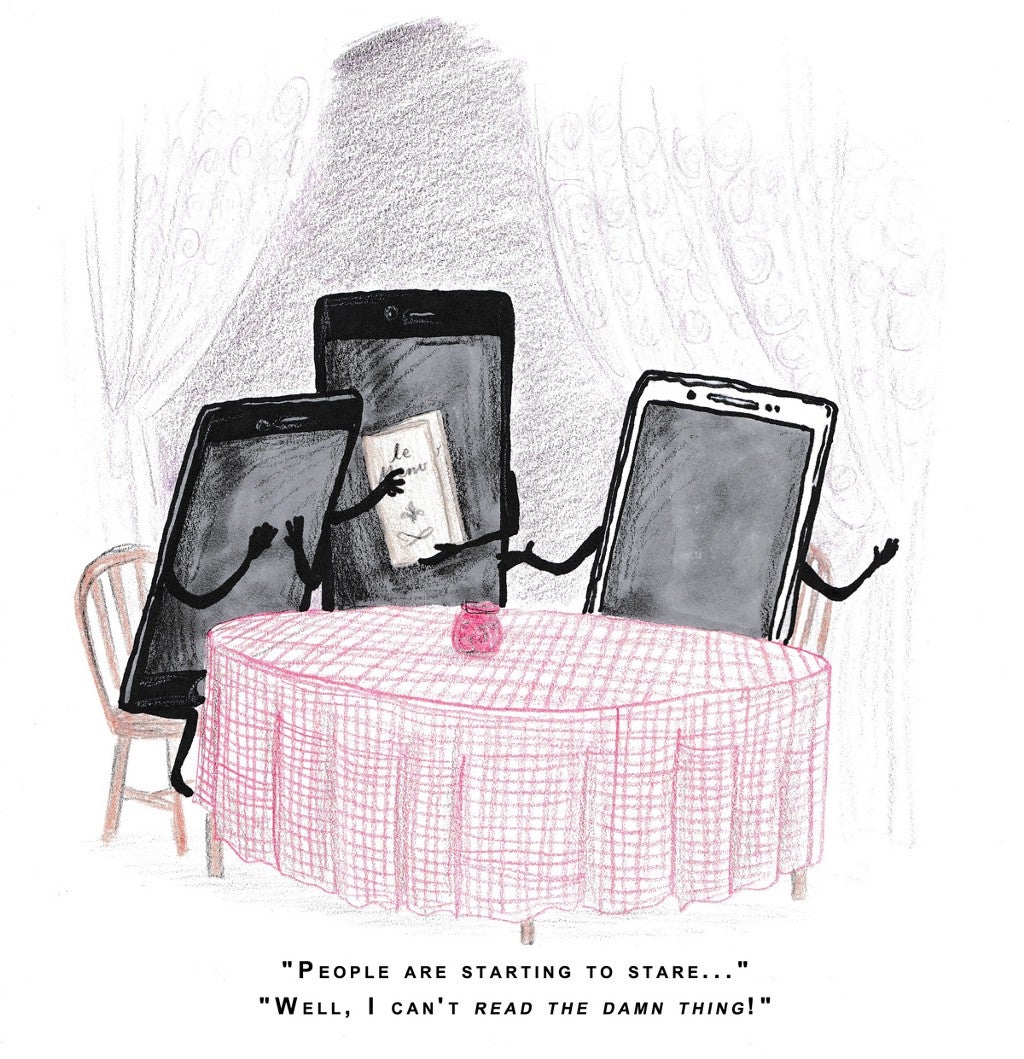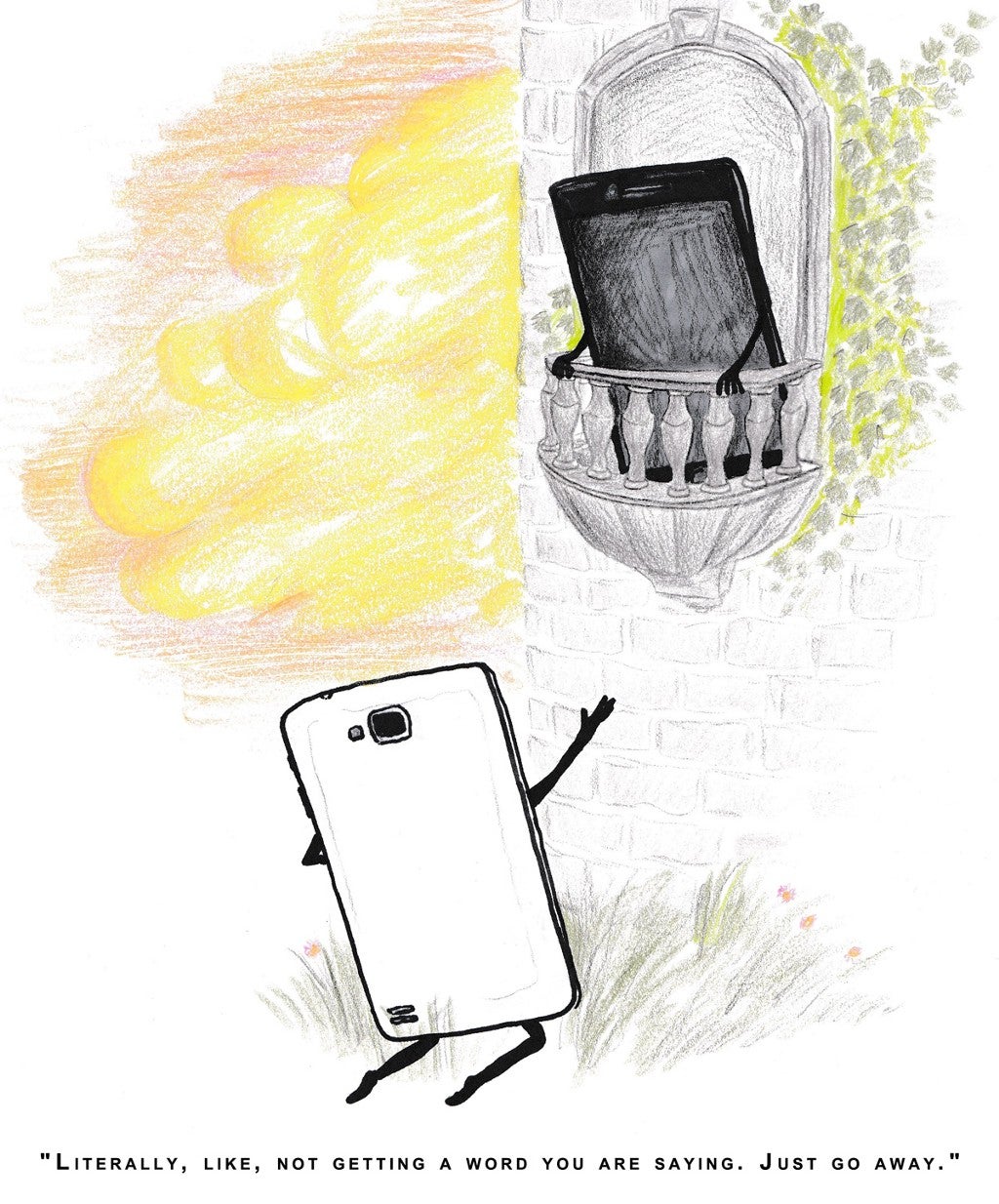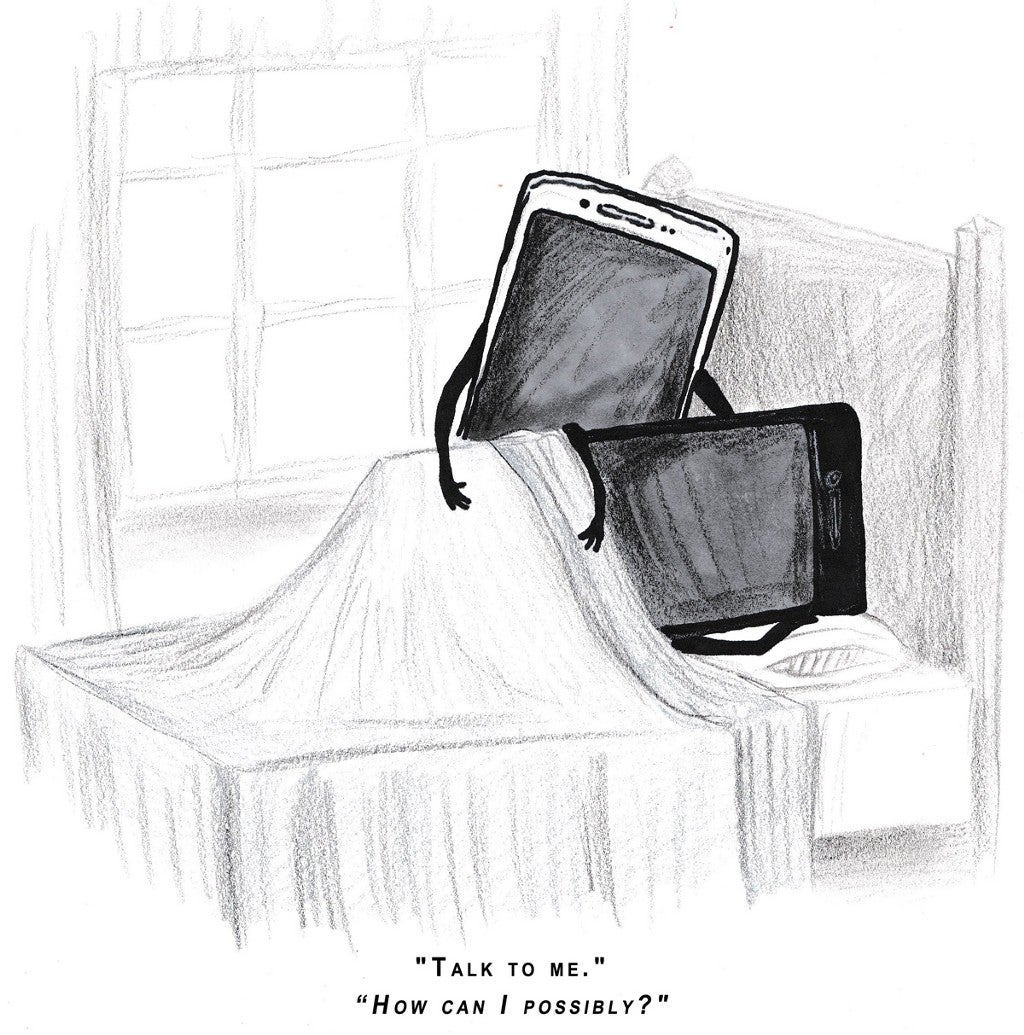I’ll preface this story by saying that if my boyfriend of nearly two years had switched from iPhone to Android before we moved in together, I would almost certainly be referring to him as my ex-boyfriend.
My life and relationship, up until a few weeks ago, was totally normal. Routine, even! I would get up early, go to work, work all day, and come home around dinner time. Watch television, do dishes, take a shower, read a book, tweet some dumb stuff and go to bed. Rinse and repeat. As with most people, the hours I spent at work were peppered with all of the newfangled ways to socialize — Gchat, Twitter, private chat rooms like Slack — with friends in and out of the office. Then there was iPhone-only iMessage, a super easy way to communicate with my boyfriend Dan, who works from home as a freelance writer. Having iMessage integrated with my MacBook was especially convenient, as it means I don’t need to actually have a phone in hand to text message — a dead giveaway that I’m neglecting work. Speaking of iPhones, before we moved in together, we’d use FaceTime to say goodnight. (I know, gross!) You could call us … an iPhone family. Basically, you could say we were very loyal to the Apple brand.
But out of the blue, Dan decided he was switching to an Android phone, citing issues like “iPhone 5S is too slow,” and “I don’t want to use my upgrade until there’s a new iPhone” and “Blah-blah-blah, something, I hate big screens.” Fine, I thought to myself. The tiny box he looks at all day long has nothing to do with me.
Boy, was I wrong.
Within the first week of Dan joining #TeamAndroid, we were already having communication problems. Our iPhone-only iMessages no longer worked. Texting was rough — there’s something very reassuring about blue iMessage bubbles. When the bubble turns green, as it does when you’re texting from a non-Apple product, the exchange seems fraught. When someone doesn’t respond to a blue iMessage, the immediate thought is that this person is, for some reason, ignoring you. When someone doesn’t respond to a green bubble text, you may be more likely to assume shitty technology is the culprit. It wasn’t just texting. When I would call Dan, his phone no longer rang through the computer, which meant he never heard it. Not to mention his new phone’s charge depleted fast.

In the hopes of finding a messaging alternative that would work as smoothly as iMessage once did, we both downloaded a slew of apps that promised to help bridge the chasm. We tried everything:WhatsApp (nope), Slack (felt too professional) and GroupMe (two does not a “group” make) were all installed and then quickly deleted. We settled, begrudgingly, on Gchat, which remains to serve its purpose.
It may sound crazy, but this — this tiny earthquake in our digital communication — is a real issue. One that, if I could afford longer therapy sessions, I would discuss with my therapist. Our parents say this isn’t a problem (“When I was your age,” says my 60-year-old mother, “we didn’t even have an answering machine, so if someone would call and I wasn’t home, then too bad for me”). And maybe for our parents today it wouldn’t really be a problem. But since people are going to call us millennials and then laugh at us anyway, we might as well acknowledge what makes us so unique and insufferable: Our technology, whether we mean for it to happen or not, is an extension of ourselves, and when it changes, we have to change, too.
Consider this: If we had met on Snapchat, and proceeded to communicate mostly through Snapchat, and then all of a sudden Snapchat was no longer available, is it crazy to think that our relationship would suffer some fallout? If each platform is a language unto itself, switching to another platform and trying to maintain the exact same relationship would be a challenge, and not just because wires can sometimes cross. You have to figure out the new way to say the thing that you said a certain way using a certain technology, and you have to figure it out fast.

Were we the only inter-operating-system couple? I talked to a few others who were split between iPhone and Android. Android users who entered a relationship with an iPhone user said they didn’t really have any issues with the difference, because they’ve never known what it would be like to communicate any other way. The Android users I talked to were mostly annoyed their “elitist” partners wouldn’t give up their precious iPhones for a far better product. In both cases, both parties were loyal to their operating systems. However, those who switched or whose partner switched mid-relationship in either direction found themselves plucked from the comfort of their safe and stable digital world, forced to relearn everything they once knew and immediately understood the discomfort that came along with that kind of change.
It’s been nearly two months since Dan jumped off the Apple bandwagon, and we are still working hard to deal with shifts in communication that in the beginning felt so dramatic and insurmountable. The solution that seems to work the best? Giving up. We talk less during the day, because it’s just so annoying to attempt to communicate in a manner that does not constantly feel like one of us is missing part of the conversation. It has been eye-opening to see the many ways that technology can hurt rather than help us — a single text that doesn’t go through could result in a major miscommunication that we’d have to wait to see each other face-to-face to figure out. In this particular case, less is more, better and, I hate to say it, healthier.
Caroline Moss is a writer and former deputy culture editor at Business Insider. You can see her work in Cosmopolitan, The Hairpin, New York magazine and The New York Times.
More digital culture on MEL:
- The Invisible Weight of Digital Hoarding
- Interviewing Your Digital Doppelgänger
- YouTube’s Biggest Watchdog Grapples With His Popularity
